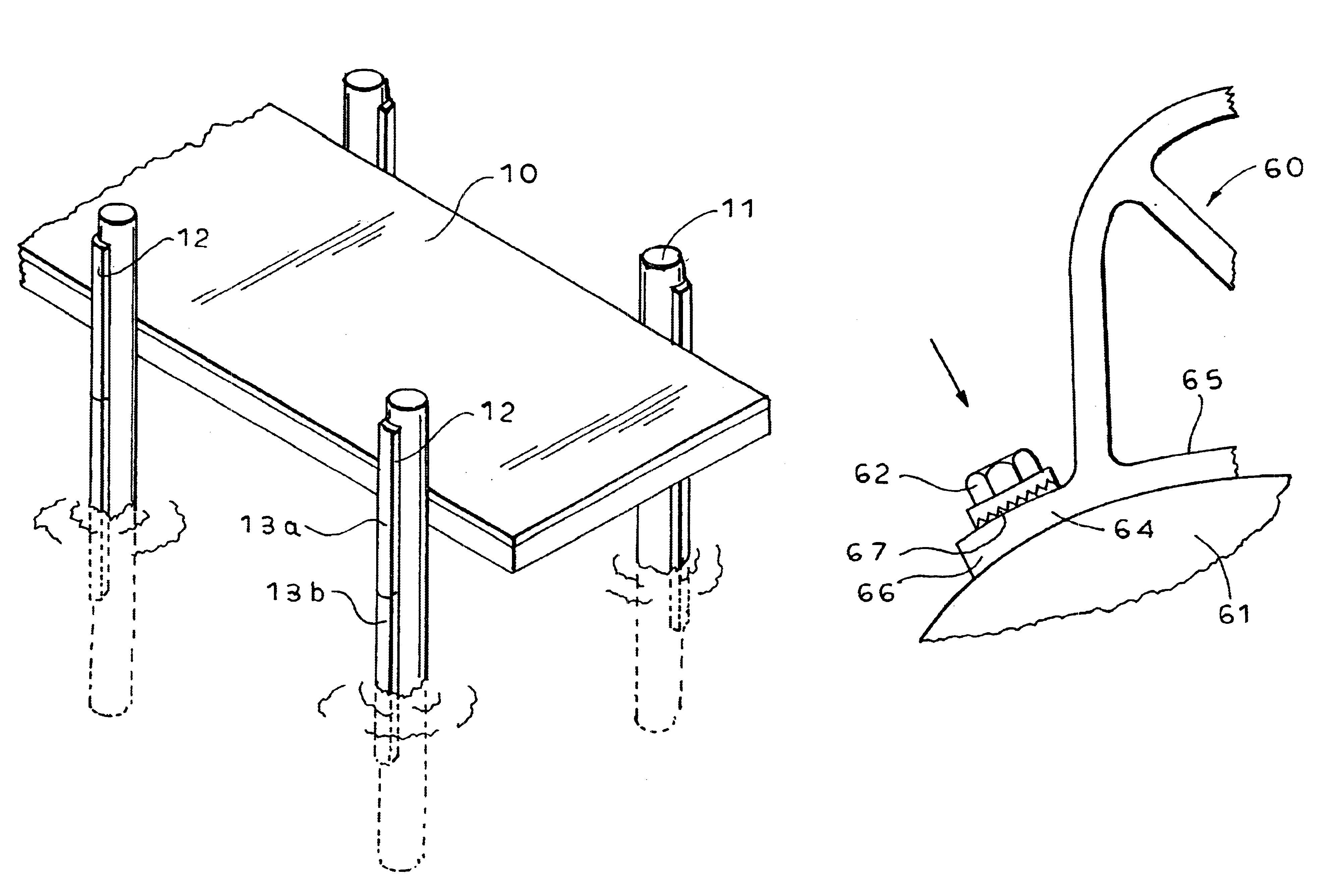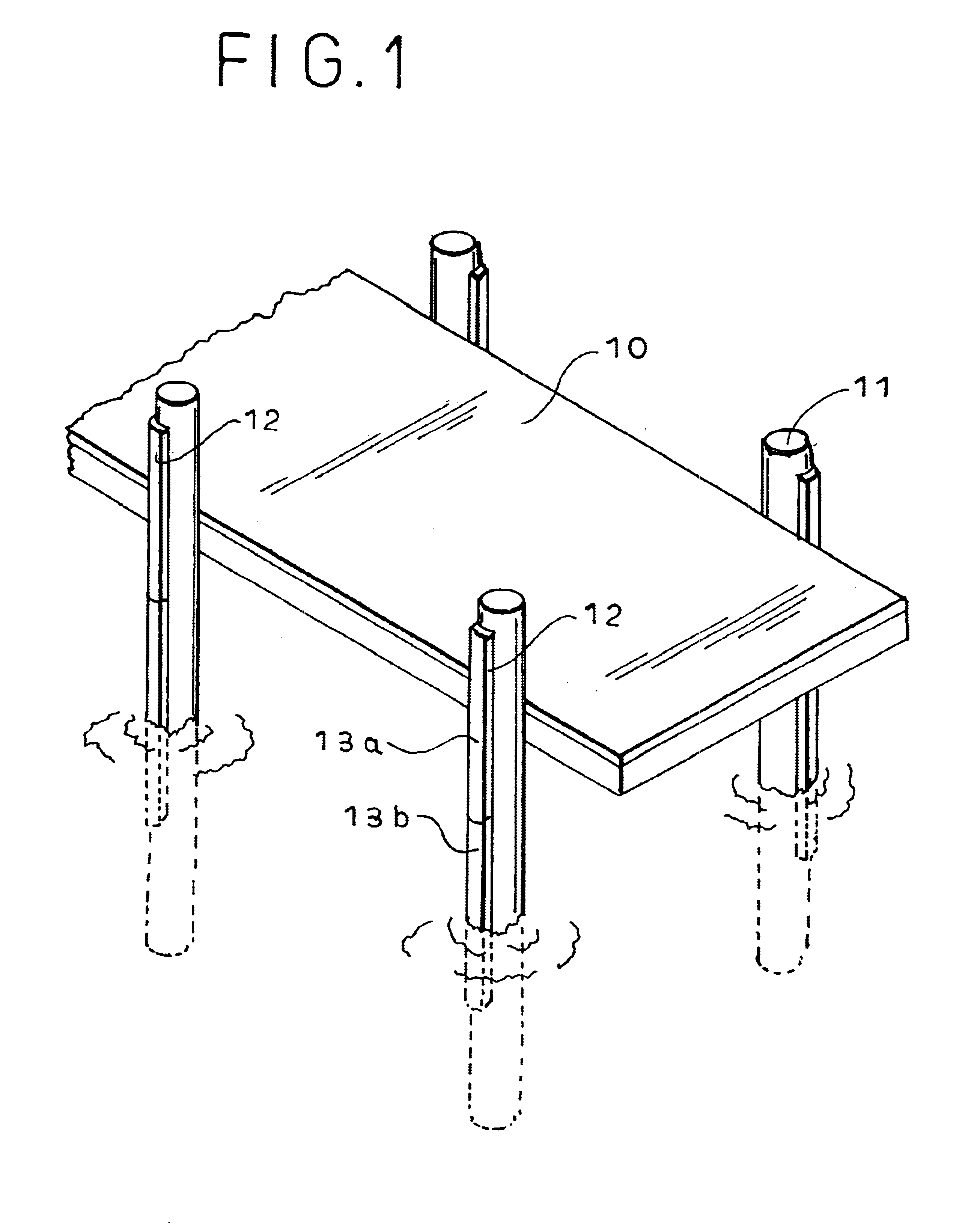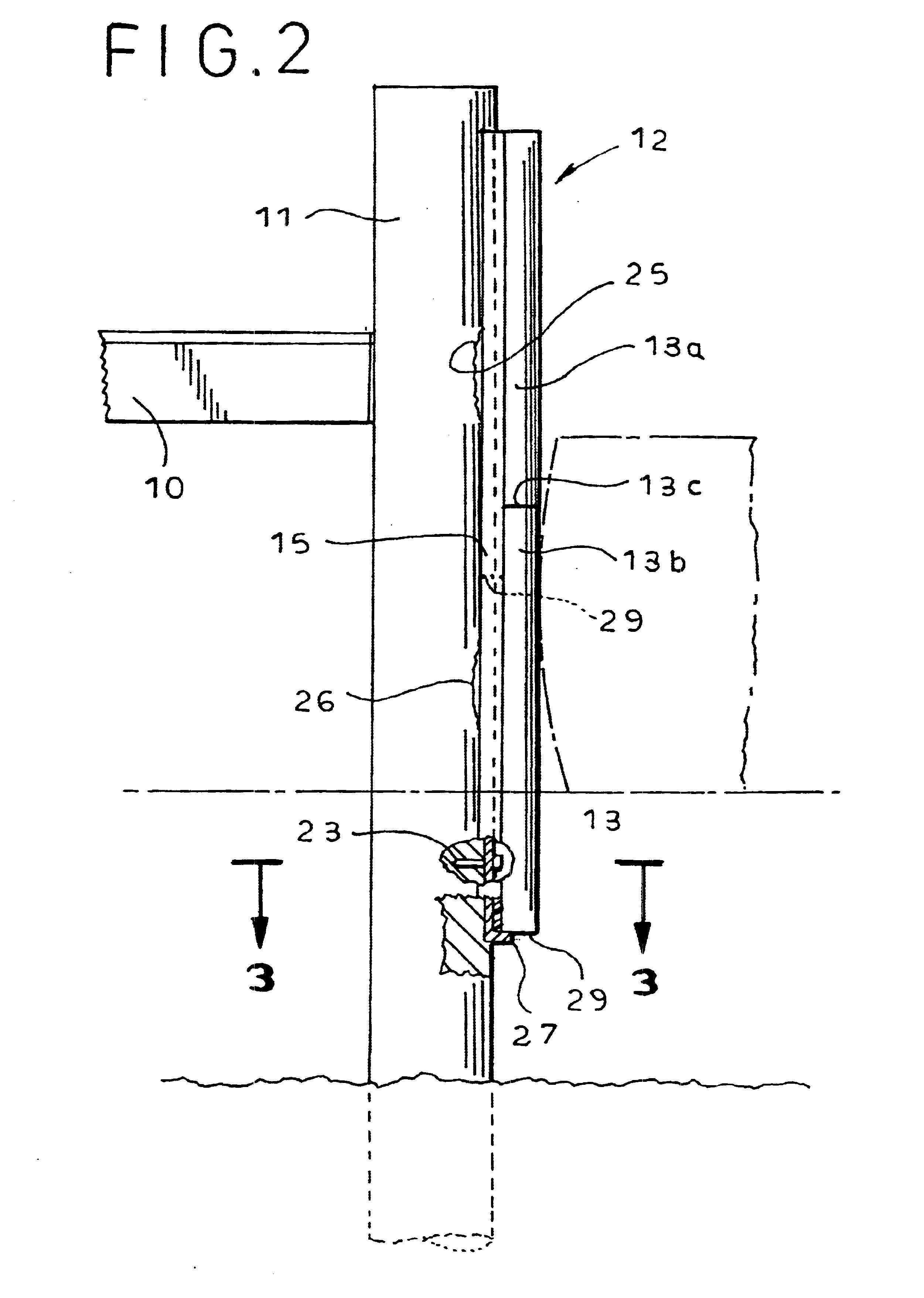Piling fender
a fender and fender technology, applied in the field of fender, can solve the problems of tearing the fender material away from the fastener, irregular contours of the piling, and the fender material of the piling is easily damaged and unsightly,
- Summary
- Abstract
- Description
- Claims
- Application Information
AI Technical Summary
Benefits of technology
Problems solved by technology
Method used
Image
Examples
Embodiment Construction
Referring now to the drawings, FIG. 1 represents a typical form of fixed dock structure, in which a dock platform 10 is supported on opposite sides by multiple vertical pilings 11 driven into the seabed. The platform 10 is rigidly secured to the pilings by suitable means, such as bolts (not shown).
Vessels approaching and / or tied up at the dock have to be concerned about avoiding direct contact between the topsides of the vessel and the outer surfaces of the pilings 11, to prevent damaging the vessel. The vessel can (and sometimes does) provide its own fendering. However, many marinas provide vertical fendering along the outside faces of the pilings, as indicated generally at 12 in FIG. 1. Such fendering extends over a sufficient vertical portion of the pilings 11 to provide protection for vessels of various sizes at various stages of tide. Because of the rather severe duty to which the piling fenders are subjected in resisting contact by heavy vessels, and because the somewhat harsh...
PUM
 Login to View More
Login to View More Abstract
Description
Claims
Application Information
 Login to View More
Login to View More - R&D
- Intellectual Property
- Life Sciences
- Materials
- Tech Scout
- Unparalleled Data Quality
- Higher Quality Content
- 60% Fewer Hallucinations
Browse by: Latest US Patents, China's latest patents, Technical Efficacy Thesaurus, Application Domain, Technology Topic, Popular Technical Reports.
© 2025 PatSnap. All rights reserved.Legal|Privacy policy|Modern Slavery Act Transparency Statement|Sitemap|About US| Contact US: help@patsnap.com



